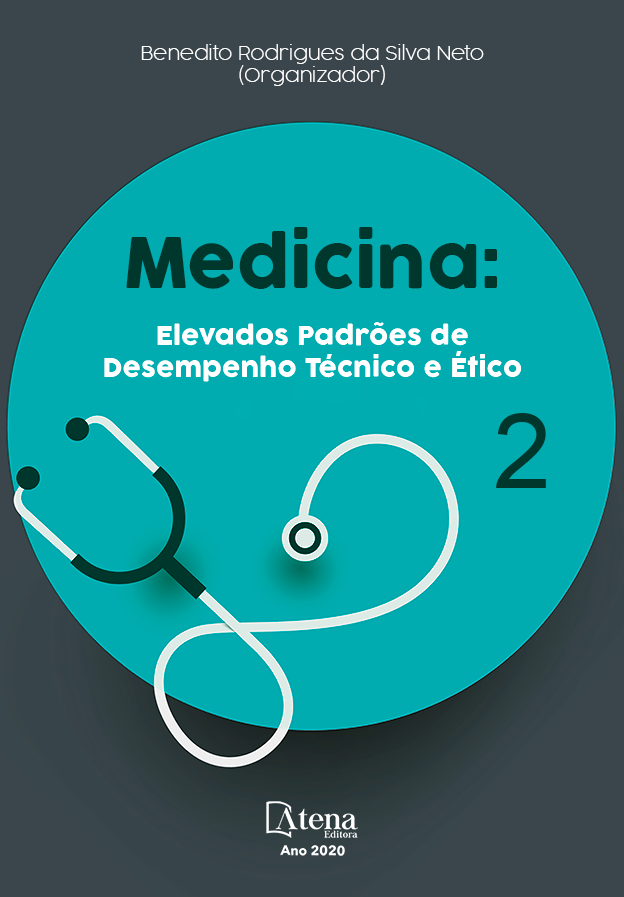
DOENÇA DE CAROLI - UMA DESORDEM CONGÊNITA RARA COM REFRATARIEDADE AO TRATAMENTO CIRÚRGICO: RELATO DE CASO
Apresentação do caso: Paciente, sexo feminino, 50 anos, com história de de Doença de Caroli, realizou hepatojejunostomia em Y de Roux parcialmente resolutiva, procurou atendimento com dor importante em hipocôndrio direito, 9/10, constante e diariamente, sem sinais de colestase. Refere episódio de colangite infecciosa, tratada com metronidazol 1000 mg/dia. Hoje encontra-se bem. Discussão: A Doença de Caroli (DC) é uma desordem congênita benigna rara que contém dilatação sacular segmental não obstrutiva dos ductos biliares longos intra hepáticos. É uma das doenças fibrocísticas hepáticas e apresenta-se em duas formas: pura, onde há dilatação cística dos ductos biliares intra hepáticos e complexa, associada a fibrose hepática congênita e doença autossômica recessiva do rim policístico.A etiologia não é bem estabelecida. Apresenta-se, normalmente, com dor abdominal em quadrante superior direito, icterícia e colangite recorrente. Podem haver complicações como litíase intra hepática, formação de abscesso, cirrose e septicemia. O diagnóstico é confirmado por ultrassonografia, tomografia computadorizada ou colangiopancreatografia. O tratamento ideal é ressecção hepática quando localizada e transplante hepático quando difusa. As cirurgias dependem da extensão do acometimento hepático. Alterações focais necessitam ressecção hepática associada a colangiojejunostomia em Y de Roux e as mais abrangentes envolvem segmentectomia, lobectomia ou hepatojejunostomia. Os pacientes têm sintomatologia amenizada e até erradicada. Mas neste caso, permaneceram os sintomas. O seguimento dos pacientes pós transplante hepático mostrou resultado superiores em alguns estudos em relação às excisões parciais, porém não é aceito como primeira linha terapêutica devido a demanda por fígados no Brasil. Conclusão: Em pacientes com DC persistente pós-ressecção cirúrgica, a última etapa terapêutica se torna o transplante hepático. Em geral, pacientes têm melhora significativa dos sintomas por anos, mas a recidiva e a falta de controle das complicações da doença precisam de atenção nas próximas pesquisas sobre resolução.
DOENÇA DE CAROLI - UMA DESORDEM CONGÊNITA RARA COM REFRATARIEDADE AO TRATAMENTO CIRÚRGICO: RELATO DE CASO
-
DOI: 10.22533/at.ed.71620161113
-
Palavras-chave: Doença de Caroli; Doenças das vias biliares; Cirurgia hepática; Transplante de fígado.
-
Keywords: Caroli's disease; Bile duct diseases; Liver surgery; Liver transplant.
-
Abstract:
Case report: Female patient, 50 years old, with a history of Caroli's Disease, underwent partially resolving Roux-en-Y hepatojejunostomy, sought care with severe pain in the right hypochondrium, 9/10, constant and daily, with no signs of cholestasis. She reports an episode of infectious cholangitis, treated with metronidazole 1000 mg/day. Today she’s well. Discussion: Caroli's disease (CD) is a rare benign congenital disorder that contains non-obstructive segmental saccular dilation of the long hepatic bile ducts. It is one of the fibrocystic liver diseases and comes in two forms: pure, where there is cystic dilation of the intrahepatic bile ducts and complex, associated with congenital liver fibrosis and autosomal recessive disease of the polycystic kidney. The etiology is not well established. It usually presents with abdominal pain in the right upper quadrant, jaundice and recurrent cholangitis. There may be complications such as intrahepatic lithiasis, abscess formation, cirrhosis and septicemia. The diagnosis is made by ultrasound, computed tomography or cholangiopancreatography. The ideal treatment is liver resection when localized and liver transplantation when diffuse. The surgeries depends on the extent of hepatic involvement. Focal changes require liver resection associated with Roux-en-Y cholangiojejunostomy and the most comprehensive involve segmentectomy, lobectomy or hepatojejunostomy. Patients have reduced and even eradicated symptoms. But in this case, the symptoms remained. The follow-up of patients after liver transplantation has shown superior results in some studies in relation to partial excisions, however it is not accepted as the first therapeutic line due to the demand for livers in Brazil. Conclusion: In patients with persistent CD after surgical resection, the last therapeutic step becomes liver transplantation. In general, patients have experienced significant improvement in symptoms for years, but recurrence and lack of control of disease complications need attention in future resolution research.
-
Número de páginas: 4
- Leonardo Toledo Mota
- Achiles Queiroz Monteiro de Rezende
- Jackson Alves de Lima
- Francielli da Silva Thiessen
- Mariana de Lima Alves
- Messias Genezio Santana da Silva
- Andressa Rayandra Trindade Hitzeschky Reis
- Marianna Boaventura Manfroi
- Felipe Gomes Boaventura
- Juliana Jeanne Vieira de Carvalho
- Araceli Perin Carniel


